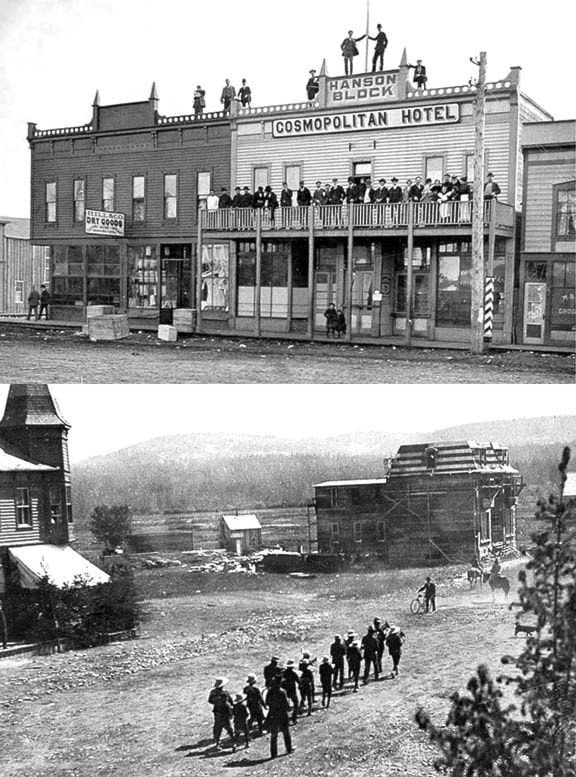JIM CAMERON
Oh! My name is McNamara; I’m the Leader of the Band,
And tho’ we’re few in numbers we’re the finest in the land.
We play at wakes and weddings and at every fancy ball,
And when we play at funerals we play the March from Saul.
- From “McNamara’s Band” by O’Connor & Stamford
Let’s take this point by point. There was no Cranbrook city band leader by the name of McNamara. On the other hand there was one by the name of Hickenbotham. The ‘few in numbers’ was certainly accurate in the early days of the Cranbrook City Band. They didn’t exactly play for wakes and weddings, fancy balls or funerals either, so Hayden’s Dead March from Saul is out. And as for the finest in the land, hmmm... let’s be honest here, probably not.
Cranbrook still has a city band of course. The Girl’s (and now boys) Bugle Band has been on the scene for decades but the old city brass band concept, well, it is long gone and unlikely to return, unless there is another big war and then a band will no doubt rise to provide suitable military musical background.
Cranbrook may never have had a McNamara’s band per se, but it tried. The boys weren’t in it for the money, mind you. Not in a city band. It is a love of music, by Jove, a sense of civic pride and perhaps just a smidgeon of vanity that fires up the group.
As early as Aug. 1898, there was talk of forming a local town band. Just talk at first but some smoldering ember must have caught hold for by early July 1901, there was a subscription paper circulated within the community to raise money for instruments required to form the first Cranbrook Brass Band. It came together under the direction of Bandmaster Hickenbotham and included Messrs. Sproule, Simmons and Woods, Grossman and Boyce, Bathey, Vroom, Patmore, McDonald and Prest, Dickinson and Reese, on euphonium, cornets, bass, tenor, trombone, clarinets, snare drum and bass drum respectively. Their names deserve to be recalled every century or so for the sake of posterity.
The instruments arrived two months after the fundraising. In the interim a support group met at the Wentworth Hall for the (very optimistic) purpose of forming a Cranbrook band business organization. The resultant Officiali Corporis (because even then Latin was popular among musicians) consisted of G. H. Gilpin - pres., W.W. Doble – secretary/treasurer along with V. Hyde Baker, W.T. Reid and James Ryan as an executive committee. The committee apparently played no musical instruments of any note and went on to very successful business careers.
All was now in order and in early Sept. the boys in the band began regular practices with the intention of playing the local Fall Exhibition three weeks later. There is no indication that they made the gig. If they did play publicly over the next two months the fact has gone generally unrecorded although, by the end of October, members of the Brass Band had organized a dance orchestra available for local hire. There is little mention of their success either.
The City Band’s first of not very many performances took place on the evening of Nov. 21, 1901, with the musicians situated on the second floor balcony of the Cosmopolitan Hotel. Lit by the wonder of outdoor electrical lights they played “an enjoyable concert” and then no doubt headed indoors to try to pry their instruments from their frozen lips. Although the band declared their intention of playing a Christmas dance the following month there seems to be no record of the event. In fact, they don’t really surface again until May, 1902, when once again under captivating electric lights they played a two-hour show on Baker Street, stating afterwards they hoped to make it a regular event. Their hopes appear to have fallen flat. In fact, in May of 1903 local citizens began to question the whereabouts of the city band and, perhaps more importantly, the instruments. By August 1903, a local editorial reported that the band was not doing well and might wish to consider putting the instruments away for a few months and then reorganizing. It sounds suspiciously like a nice way of saying that whoever was playing should probably quit if they hadn’t already. E.C. Cann of Fort Steele discussed the possibility of re-organizing a Cranbrook Band and Orchestra in order to utilize the idle instruments but the plan was thwarted by a Cranbrook citizen’s attempt to do exactly the same thing one month later.
Will the Cranbrook Brass Band once again fill the city streets with the music of the spheres? Will the paid-for-by-local-subscription instruments surface once again? Sadly, dear reader, you will have to wait some time in order to discover the answer. You’ve waited more than one hundred years, a few more months shouldn’t make much difference and, as far as musicians go, time isn’t all that important anyway.
In reference to last week’s column “Tragedy on the St. Mary’s”, Janus wishes to thank a keen- eyed reader who suggested (correctly) that if one wishes to not only save a whole lot of apostrophes but also get the name right then simply refer to the “St. Mary Lake and River” rather than the “St. Mary’s”.
